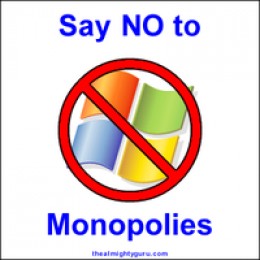

This is similar to the fact that even within a restrictionist cartel, it is in the interest of each cartel member to defect by violating the cartel agreement, maintaining maximum output and sales while all their competitors adhere to the cartel agreement by restricting output. Although automobile manufacturers will all profit from the crisis which compels them to restrict output, those manufacturers who successfully circumvent the crisis by maintaining their output despite the crisis will profit the most. Each individual automobile manufacturer has an incentive to increase their output faster and sooner than their competitors. However, even these profits will be temporary. So it is not at all surprising to find excess profits during a negative supply shock. However, when there are unexpected supply chain problems, all firms collectively are required to behave as if they were a cartel which had unanimously agreed to jointly restrict their output.įor example, the current chip shortage effectively forces all automobile manufacturers to behave as if they had created a restrictionist cartel.

In the end, the restrictionist firm will have reduced its own sales volume without successfully increasing the revenue per sale. If one firm reduces its output by 1%, then all other firms collectively will increase their output, increasing their market share at the expense of the firm that reduced its output.

But in a competitive market, this strategy will usually fail. For example, a monopoly will seek to reduce output by 1% as long as this increases the price by more than 1%. The goal of every monopolist is to increase profits by restricting output, as long as the percent reduction in output is smaller than the percent increase in price. Some commentators have expressed astonishment at record profits during COVID-related supply chain problems, but there is really nothing surprising about this. Firms can earn profits due to unexpected reduction in supplyĪ firm may even earn profits due to an unexpected reduction in supply. In competitive markets, success requires repeated innovation, and those who attempt to rest on their laurels will soon be surpassed and threatened with bankruptcy. Apple could continue to maintain profitability only by successively introducing improved iPhones with new features.
#Monopolys android#
But similar Android phones soon followed. For example, Apple may have earned profits when it introduced the original iPhone, the first smartphone with a multi-touch touchscreen. Similarly, innovation encourages imitation. When increased consumer demand leads to higher prices and profits, these profits attract entry, increasing supply until the price falls, eliminating the profits. Or a firm may earn profits when it successfully innovates with a new product that offers higher quality and/or a lower price than competing products. A firm may earn profits when unexpected increases in consumer demand allow them to charge higher prices. In a competitive market, profits tend to be temporary. These profits will continue to attract entry until the price is bid down near the cost of production, eliminating profits. If one firm tries to profit by charging a price that is far above the cost of production, competing firms will seek to undercut them by charging a price that is slightly lower, but still above the cost of production - and is therefore still profitable. It is generally acknowledged - at least by those with a basic familiarity with economic theory - that markets will usually function well when there is sufficient competition. On the other hand, if profits are earned, then he/she may increase the plant size to gain more profit.Best way to support competition is often to get the government out of the way When a monopolist incurs losses, he/she may exit the business. The monopolist may hold some patents or copyright that limits the entry of other players in the market. In monopoly, the entry of new organizations is restricted. In the long-run, under perfect competition, the equilibrium position is attained by entry or exit of the organizations. The adjustment is done to make MR equal to the long run MC. However, in long-run, the monopolist can expand the size of its plants according to demand. The equilibrium under monopoly in long-run is same as in short-run. In the short run, the monopolist should make sure that the price should not go below Average Variable Cost (AVC). This is because there is not so much difference under short run and long run analysis in monopoly. Till now, we have discussed monopoly equilibrium without taking into consideration the short-run and long- run period. Short-Run and Long-Run View under Monopoly :


 0 kommentar(er)
0 kommentar(er)
